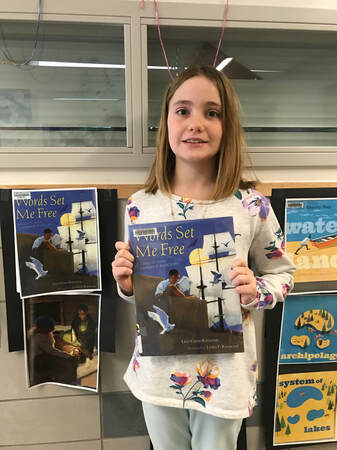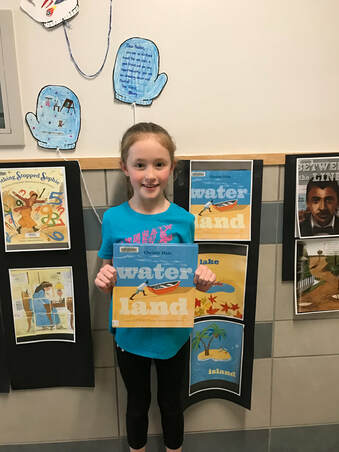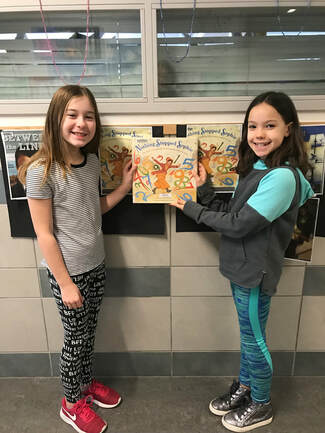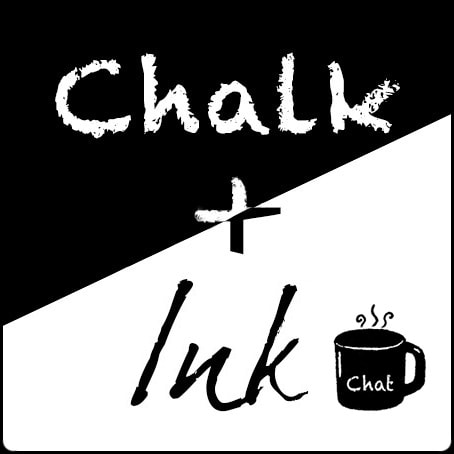|
Yikes! We didn't even have the real 2019 Sibert winner on our mock list. That's okay, though. We loved getting to read all these fabulous nonfiction books. Withough further ado, here are more of our picks! Freed by Words By: M.T & R.B Have you ever wondered how some slaves learned to read and write? Frederick Douglass learned to read and taught many other people. In Words Set Me Free written by Lesa Cline-Ransome and illustrated by James Ransome should win the Sibert Medal because the illustrations, the main text, and the back matter support the book’s main idea-perseverance. The first reason Words Set Me Free should win the Sibert Medal is because the illustrations support the book’s main idea-perseverance. The first page of the book shows the woman holding the candle that lights up the room while Frederick sleeps on the floor with no bed. This shows perseverance because it shows his family suffers through poverty. Turn a few pages and you’ll find Fredrick standing there tied up. His face showed hope which showed us perseverance. When the reader flips three pages, you find a shadow of a man yelling. It made Frederick feel unwanted which made him feel like he should never give up. The second reason words set me free should win the Sibert Medal is because the main text supports the book’s main idea-perseverance. In the beginning, Lesa Cline-Ransome wrote,¨We ate our two meals a day out of a trough just like the animals in the barn.¨ This shows perseverance because he's eating from the same thing the animals do. His will to survive was greater than his circumstances. In the middle of the book, Lesa Cline-Ransome wrote, “With a brick and a lump of chalk was first how I practiced my letters. Scratched them all along the brick streets of Baltimore.” This shows perseverance because he never gave up on learning his letters. At the end of the book, Lesa Cline-Ransome wrote, ”At twelve years old,with tips I saved from my errands, I bought my first newspaper and learned new words--liberty, justice,and freedom.” This shows perseverance because it took a long time for a slave to earn money and he never gave up on reading. My third reason Words Set Me Free should win the Sibert Medal is because the back matter supports the book’s main idea-perseverance. Because in the beginning of the back matter Frederick wrote a letter to escape from his master. This shows he was persevering to stop slavery. He thought he had persevered through life. Shortly after in the back matter Frederick tried to escape slavery but didn´t escape that night.This tells us Frederick was persevering because he tried to escape to show the rest of the world slaves can be more. In the end of the back matter, Frederick and his friends were jailed and taken away for trying to escape. This shows perseverance because jail is a really hard place to be in and all he was trying to do was retrieve his freedom. Words Set Me Free written by Lesa Cline-Ransome and illustrated by James Ransome should win the Sibert Medal because the illustrations, the main text, and the back matter support the book’s main idea-perseverance. Frederick Douglass loved to read, and persevered even though he knew slaves could get hurt. Bodies of Water and Landforms By A.M.K. and L.P. Do you know a lot about landforms and water forms? If you don’t know a lot about landforms and water forms than you should definitely read the book Water Land. Before you read Water Land you may not know anything about water forms or landforms, but after you read Water Land you will know everything you need to know about water forms and landforms. Water Land by Christy Hale should win the Sibert Medal because the illustrations, main text, and back matter support the book’s main idea that bodies of water and landforms are connected. The first reason Water Land should win the Sibert Medal is because the illustrations support the book’s main idea that bodies of water connect with landforms. Christy Hale uses a novel approach to show how landforms partner with bodies of water. On the first spread there is a picture of a lake, but when you flip the page an island appears. That shows you can't have an island without a lake. Another example is if there is a strait of water there is an isthmus of land. An isthmus is a landform that is in the middle of two bodies of water, so you can’t have an isthmus without two bodies of water. Another pair is a gulf of water with a peninsula of land. A peninsula of land is land that is surrounded on three sides by water. So you can’t have a gulf of water without a peninsula of land. The illustrations are one reason why Water Land should win the Sibert Medal. The second reason Water Land should win the Sibert Medal is because the main text supports the book’s main idea that bodies of water partner with landforms. In the main text there are words that coordinate with the pictures. There would be an illustration to show what each word means and looks like. On the map there are labeled parts to show where the water forms and landforms could be located. On the big open map it has labeled continents. On one of the continents it has a lake in the middle and on the edge there is a strait. Also, on each page there are big, bold words that are clear, neat and easy to read. One example is isthmus. All the words are big and on top of the page, so you can see them right away. The main text is another reason why Water Land should win the Sibert Medal. The third reason Water Land should win the Sibert Medal is because the back matter supports the book’s main idea that bodies of water partner with landforms, for example all bodies of water are different. A lake is a water form fully surrounded by land and a gulf of water is surrounded by water on only three sides instead of all around. Landforms are the total opposite of water forms. An example would be the system of lakes. They have three lakes. So take that water, turn it into land and surround it by water. It would be an archipelago. All in all, we definitely think Water Land by Christy Hale should win the Sibert Medal because the illustrations, main text, and back matter support the book's main idea that bodies of water and landforms are connected. Between the two covers you will find everything you need to know about water forms and landforms. Sophie Never Stopped
By: A.J.J. and R.F. Can you find a consecutive sum equation that equals 15? Well Sophie Germain could find that equation in about less than a minute when she was about 10 let alone the fact that most 10 year olds probably don’t even know what consecutive means. Nothing Stopped Sophie By: Cheryl Bardoe and Illustrated By: Barbara McClintock should win the Sibert Medal because of the Illustrations, maintext, and the back matter supports the book’s main idea- perseverance. The first reason why Nothing Stopped Sophie should win the Sibert Medal is because of the illustrations support the book’s main idea- perseverance. The first spread of the book shows a soaring bird to represent Sophie Germain flying over gender discrimination. Barbara McClintock shows the bird flying with numbers to show that if people say girls can’t be mathematicians it’s like saying birds can’t fly. When the reader flips to page eleven the reader will see a collage of some of Sophie’s work but painted over the collage shows Sophie working. The illustrationer shows Sophie working on her vibration equation to show that she was persevering for about four years. Later on in the book when Sophie is an adult, it shows a time lapse of Sophie’s life but in each picture it’s her working. The Ms.McClintock wanted to show Sophie calculating numbers to reinforce the idea that Sophie worked for about two years to solve the vibration calculation. The illustrations highlight that it is possible to persevere through gender discrimination. The second reason why Nothing Stopped Sophie should win the Sibert Medal is because the main text supports the book’s main idea-perseverance. Cheryl Bardoe wrote, “Nothing stopped Sophie.” over and over to reinforce the idea that Sophie persevered through her entire life. In the beginning of the book you will see Sophie’s parents saying, “It would be impossible for women to be a mathematician.” The writer wrote that to reinforce the idea that there were in obstacles in Sophie’s life.Towards the end of the book the main text states, “Sophie returned to her work for two more years she tested her predictions by vibrating sand on plates.” The author wanted to really reinforce the idea that Sophie never ever stopped trying even when life got hard for her, and if that isn’t perseverance we don’t know what is. Ms.Bardoe wanted to highlight that everybody has to overcome obstacles, fears, and even more. The third reason the book Nothing Stopped Sophie by: Cheryl Bardoe and illustrated by: Barbara McClintock should win the Sibert Medal is because the backmatter supports the book’s main idea- perseverance. In the back it says, “ Women did not receive the right to vote.” The writer wanted to include that fact to highlight another one of Sophie’s obstacles that she faced. Next It says that, “ Any women expressed herself as an intellectual risked becoming the target of gossip and ridicule.” Sophie persevered to be nice and show good manners even though people said that women couldn’t be mathematicians. Unfortunately, Sophie eventually died because of a disease called breast cancer. That was one of the only things that Sophie couldn't overcome. But Cheryl Bardoe included that to highlight that Sophie worked really hard all her life even if her life wasn’t that long. Nothing Stopped Sophie by Cheryl Bardoe and Illustrated by Barbara McClintock should win the Sibert Medal because of the Illustrations, maintext, and the back matter supports the book’s main idea- perseverance. Even if people say you can’t do something it doesn't mean you have to stop doing what you love and this book teaches that exact thing and that's why we think that this book should win.
0 Comments
Leave a Reply. |
Chalk + Ink ChatsWant to hang out with teachers who write and writers who teach? Fill this form to join our Archives
October 2023
Categories |



